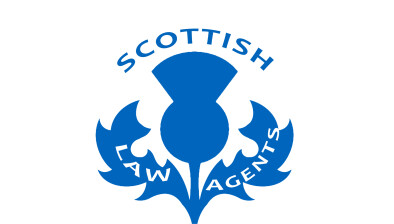Louise Laing: The return of Crown preference – is the time right to change the order of priority?

Louise Laing
The re-introduction of Crown preference and the resulting change in the order of priority of creditors on insolvency was announced as part of the Autumn budget in 2018, way before anyone had heard of Covid-19, and was originally due to come into force on 6 April 2020. It was delayed until 1 December 2020 in terms of the 2020 budget which was presented to Parliament on 11 March 2020, the same day as the World Health Organization declared the outbreak of Covid-19 to be a pandemic.
With a second lockdown in England commencing today and the devolved administrations all recently introducing their own new restrictions, it remains to be seen whether the new measures will be delayed further. As things currently stand, Crown preference will come back into play before the end of England’s second lockdown and at a time when many businesses and the economy as a whole are still feeling the impact of Covid-19.
Indeed, the new order of priority will come into force at a time when many businesses, having taken advantage of the option to defer VAT payments, or fallen behind with payments as a result of the pandemic, have greater than normal HMRC liabilities.
Although the UK government has extended some of its support measures, businesses in need of further support (whether to survive the English lockdown, operate within the restrictions in place elsewhere in the UK or remodel their business for a world which has been redesigned by Covid-19) will look to lenders, shareholders, directors and other stakeholders to provide it. Whether that support is forthcoming will depend on the facts and circumstances of each individual case and the relevant parties’ assessment thereof. However, as highlighted below, that assessment should now take into account, and may well be influenced by, the change in the order of priority resulting from the re-introduction of Crown preference.
Current order of priority
The money realised from the assets of an insolvent company is applied to meet claims of creditors in a set order of priority. The current order of priority is as follows:
- Fixed charge holders
- Expenses of the insolvency process
- Preferential debts (primarily limited to certain employee claims)
- Floating charge holders (under deduction of the prescribed part)
- Unsecured creditors (including HMRC in respect of all taxes due to it)
New Crown Preference
For insolvencies commencing on or after 1 December 2020, amounts due to HMRC in respect of the following will be categorised as secondary preferential debts:
- VAT
- PAYE Income Tax
- employee National Insurance contributions
- student loan deductions
- Construction Industry Scheme deductions
The preference applies to all such tax debts regardless of when they arose. It is not limited to a specific period pre-insolvency nor is it restricted to any such debts arising on or after 1 December 2020.
Revised order of priority
HMRC’s elevated status will result in a revised order of priority as follows:
- Fixed charge holders
- Expenses of the insolvency process
- Ordinary preferential debts (primarily limited to certain employee claims)
- Secondary preferential debts (primarily sums due to HMRC in respect of the taxes detailed above)
- Floating charge holders (under deduction of the prescribed part)
- Unsecured creditors (including sums due to HMRC in respect of other taxes)
Rationale for the change
The change to the order of priority is being introduced to ensure that more of the taxes paid in good faith by employees and customers go to fund public services as intended. The reform only applies to taxes collected and held by businesses on behalf of other taxpayers and not to taxes owed by businesses themselves (such as corporation tax and employer National Insurance contributions). Currently, if the business holding such taxes goes into insolvency before passing them to HMRC, the taxes are distributed to other creditors ranking ahead of HMRC in the order of priority. As an unsecured creditor, HMRC will normally receive only a very small percentage of the amount due to it.
In its response to the consultation on the matter, the government noted that it is committed to giving HMRC priority for collecting taxes paid by employees and customers to businesses and in its view “this is a fair approach that balances the interests of creditors and the Exchequer, which relies on these taxes to fund public services”.
Implications of the change
HMRC
By jumping up the order of priority and receiving payment ahead of floating charge holders and unsecured creditors, HMRC will be far more likely to recover the taxes now categorised as secondary preferential debts. In its 2018 budget briefing the government suggested that this change could raise up to £185 million annually.
Lenders
The change diminishes the value of floating charge security, a consequence which will be felt more acutely by lenders in the Scottish market where the ability to take fixed charge security is limited.
As noted above, payments made to floating charge holders in an insolvency are already subject to the prescribed part (a ringfenced sum set aside from net floating charge realisations for the benefit of unsecured creditors, the maximum amount of which was increased earlier this year from £600,000 to £800,000). The prescribed part was introduced in 2003 and largely offset any benefit which would otherwise have flowed to floating charge holders following the abolition of the previous Crown preference. On this occasion there is no offsetting or balancing of positions. In insolvencies commencing on or after 1 December 2020 returns to floating charge holders will, in most cases, be subject to both the prescribed part and the new Crown preference outlined above. It is worth pointing out that the new Crown preference will affect all existing and new floating charges. Unlike the prescribed part and the recent increase thereto, the date of creation of the floating charge is not relevant.
Given the foregoing, lenders should already be taking steps to address this change. For new transactions, lending criteria and security requirements may need to change. Lenders may also consider introducing new information and/or certification requirements into their documentation with a view to keeping exposure to Crown preference under review. For existing lends, additional security cover may be required or, if enforcement action is already being considered, a decision should be taken, and, if appropriate, insolvency proceedings commenced, prior to 1 December 2020.
Unsecured Creditors
The prior ranking of HMRC’s claim in respect of secondary preferential debts will also dilute the realisations available to meet the claims of unsecured creditors. Whilst, in most cases, unsecured creditors should still benefit from the prescribed part, the amount thereof may be reduced as a result of the reduction in net floating charge realisations. In addition, distributions to unsecured creditors outwith the prescribed part will become even more infrequent.
Directors
Directors may have granted personal guarantees in the past in the belief that lenders would be paid out in full from security granted by the borrower and, therefore, their guarantees would never be called. As a result of the change in the order of priority, floating charge holders are more likely to suffer a shortfall which in turn increases the likelihood of directors being pursued under their personal guarantees for any deficit.
Directors require to act in accordance with their duties, which include the duty to promote the success of the company for the benefit of its members as a whole or, when the company is or is likely to become insolvent, to act in the interest of creditors. However, where a company is experiencing financial difficulties and its directors have granted personal guarantees, it seems inevitable that their decision making will be influenced to a certain extent by their own potential exposure. Consequently, there may be an increase in director-led insolvency appointments in advance of 1 December 2020.
Borrowers
Borrowers, particularly those who are unable to provide fixed charge security, may struggle to access funding and/or see the cost of funding increase. As indicated above, the terms on which lenders are prepared to advance funds may also become more onerous with increased information and/or certification requirements.
Is the time right to change the order of priority?
From the outset the insolvency profession has warned that the negative effects of this change are likely to outweigh the gains which the Exchequer expects to receive from it.
If businesses cannot access funds or obtain the support they need, it seems inevitable that there will be more insolvencies, leading, in turn, to increased unemployment, reduced tax generation and greater pressure on the public purse.
It must therefore be open to question, particularly at this moment in time when many businesses are struggling as a result of forced closures or stringent operating restrictions, whether now is the right time to change the order of priority.

Louise Laing is a senior associate at Brodies LLP









